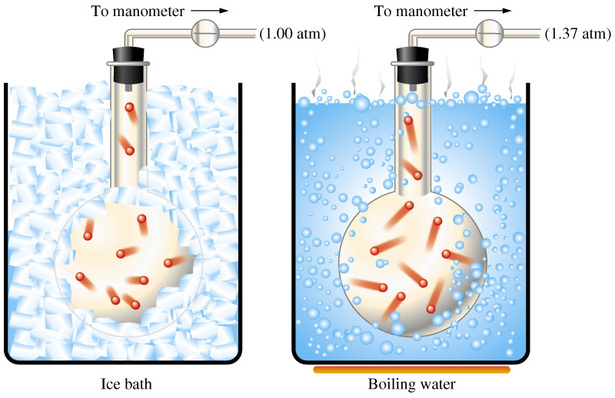Question #c046e
1 Answer
Explanation:
Before doing any calculation, try to predict what you the new pressure of the gas will be relative to its initial value.
The problem tells you that
A sample of argon... is cooled in the same container to a...
This tells you two important things
- the volume of the gas remains unchanged
- the number of moles of gas remains constant
When number of moles and volume are kept constant, pressure and temperature have a direct relationship - this is known as Gay Lussac's Law.

Simply put, when temperature decreases, pressure decreases as well, and when temperature increases, pressure increases as well.
In your case, the gas is cooled, so you can definitely expect a decrease in its pressure.
Mathematically, this is written like this
#color(blue)(P_1/T_1 = P_2/T_2)" "# , where
Now, it is important to remember that the temperature of the gas must be expressed in Kelvin!
Plug in your values into the above equation and solve for
#P_1/T_1 = P_2/T_2 implies P_2 = T_2/T_1 * P_1#
#P_2 = ( (273.15 + 0) color(red)(cancel(color(black)("K"))))/( (273.15 + 300) color(red)(cancel(color(black)("K")))) * "50.0 atm"#
#P_2 = "23.83 atm"#
Now, this should be rounded off to one sig fig, the number of sig figs you have for the final temperature of the gas, but I'll leave it rounded to two sig figs
#P_2 = color(green)("24 atm")#

